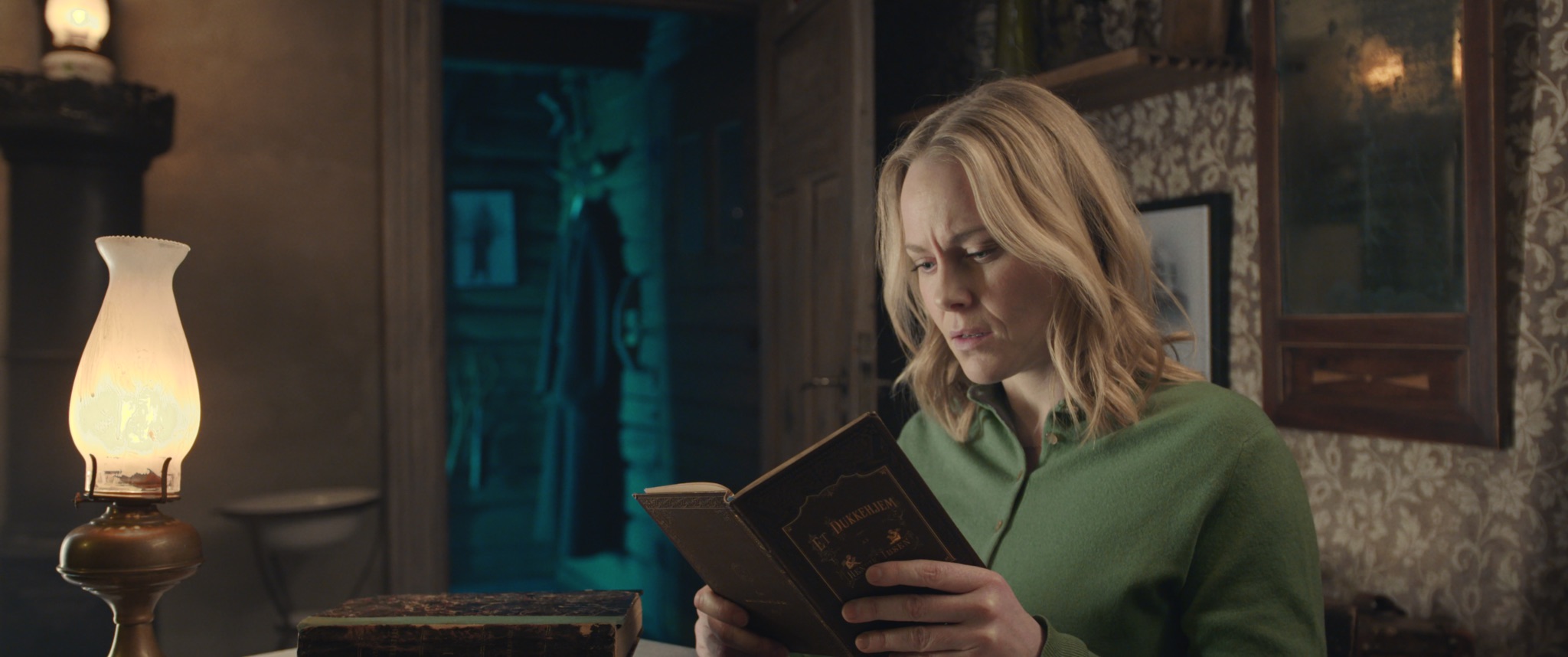Munch. Loves ghosts and vampire women – Edvard Munch, The Dance of Life | © Munch, Oslo
On a winter night, in front of the fireplace, a young woman reads a Norwegian fairy tale to the children. We are in Edvard Munch’s house in Åsgårdstrand, immersed in the Great North, where the winds whisper, the bears carry the girls on their backs, the trolls unleash evil spells.
Yet, what sees Edvard Munch as the protagonist is a fairy tale without a happy ending, which ends with the death of his mother and sister Sophie, with the devastating depression of his father, events that will forever mark the human and artistic life of the paintbrush. The Scream.
The docufilm Munch. Loves, ghosts and vampire womenproduced by 3D Produzioni and Nexo Digital, directed by Michele Mally who signs the screenplay with Arianna Marelli, at the cinema on 7, 8 and 9 Novemberinvites us into the room to look at the man of profound and mysterious charm with new eyes, a precursor and teacher for all those who came after him.
In addition to shedding new light on Munch, the new docufilm de The Great Art in the Cinema, distributed with the media partners Radio Capital, Sky Arte, MYmovies.it and in collaboration with Abbensione Musei, it is also a journey through Munch’s Norway. An invitation to viewers to search for the roots and identity of a universal artist, to question themselves on the idea of time, the main and recurring theme in his multifaceted work.

Munch. Fanstastic loves and vampire women – Edvard Munch, Ceneri, Munch, Oslo
As his biographer Sue Prideaux recounts, Munch lived eighty troubled years, between alcoholism, psychiatric problems, isolation. But the psychoanalytic reading of his work is not enough. Art historians such as Jon-Ove Steihaug, director of the Exhibitions and Collection Department of the MUNCH Museum in Oslo, Giulia Bartrum, curator of the British Museum for decades, and Frode Sandvik, curator of the Kode in Bergen, review the themes and obsessions present in his work, in addition to artistic skills. The experimental techniques that the artist has chosen to adopt in his works make his works, as the restorer Linn Solheim explains, extremely fragile, full of that research on the human soul and the attempt to translate emotions on canvas or paper. .

Munch. Loves ghosts and vampire women, Ingrid Bols
The docufilm does not neglect the crucial experience of bohème fin de siècle. As the director of the MUNCH Museum, Stein Olav Henrichsen explains, “artists are always in opposition to their time, even if – looking back – we consider them representative of a particular period in history”. And Munch in opposition to his time was there, living as a bohemian first in Kristiania – where he laughed at the bourgeois undead along with anarchist writer Hans Jæger, painter Christian Krohg and free-spirited women who embodied an independent female figure in the society – and later in Berlin, where he falls in love with Dagny Juel, associating with Satanists and doctors who experiment with the use of cocaine.
The big screen also analyzes Munch’s complex relationship with women, which does not end only with biographical events, such as the stormy relationship with Tulla Larsen, one of the “Vampire Women” that Munch met during his life and who shot the painter. during a quarrel. For the artist trauma and art, torment and desire intertwine and merge incessantly in an intense reflection on women: a “siren” and enigmatic “sphinx” who, as the writer Gunnhild Øyehaug also pointed out, attracts and terrifies the man.

Munch. Loves ghosts and vampire women – Edvard Munch, Vampiro, Munch, Oslo
The most intimate links with the northern landscapes and its vivid colors are made music in the compositions of Edvard Grieg, who spent his summers in the nature of the Troldhaugen hill in Bergen. The Norwegian composer was able to recreate that same feeling of “being at home”, as did the pianist Leif Ove Andsnes. In this continuous repetition, as well as in visual experiments through cinema and photography, we can find – as the art historians Elio Grazioli and Øivind Lorentz Storm Bjerke suggest – the key to entering Munch’s time.
A variable time that expands towards the eternal and at the same time fixes moments that subsequently become obsessions.
And we, in some way his heirs, welcome his request for salvation, a sort of opening to the spirits, to the ghosts that hover around us.
To weave the story of Munch are, in the docufilm, also the interventions of Erik Höök, director of the Strindbergsmuseet in Stockholm, of the soprano and entrepreneur Siri Kval Ødegård, of Carl-Johan Olsson, curator of 19th century painting at the Nationalmuseum in Stockholm, and the soundtrack of the film, which includes repertoire pieces, such as those of the Norwegian composer and organist Iver Kleive. To sign the original music of the film – which will be contained on the album Munch. Love, ghosts and lady vampires – Music insipired from the filmout in November on the Nexo Digital label and Believe Digital distribution – is the musician and composer Maximilien Zaganelli.

Munch. Loves ghosts and vampire women. Edvard Munch, Self-portrait, Munch, Oslo

